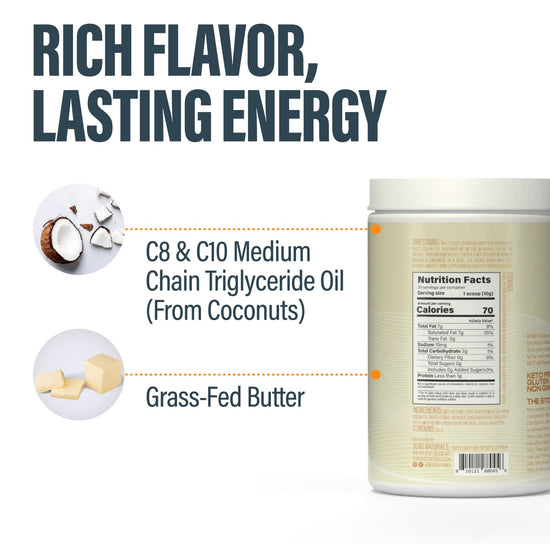Table of Contents
- Introduction
- Types of Creamers and Their Storage Requirements
- How Long Can Non-Dairy Creamer Sit Out?
- Factors Affecting Shelf Life
- Signs of Spoilage
- Best Practices for Storing Non-Dairy Creamer
- Conclusion
- FAQ
Imagine this: You pour a generous splash of non-dairy creamer into your coffee, savoring that rich flavor that perfectly complements your morning routine. But then, life happens—maybe you get caught up in work, a chat with a friend, or a long to-do list. Hours later, you realize your creamer has been sitting out. Now, you're left wondering, how long can non-dairy creamer sit out before it goes bad?
Understanding the shelf life of coffee creamers, particularly non-dairy options, is not only crucial for your taste buds but also for your health. In this blog post, we will explore the factors that influence how long non-dairy creamer can be left unrefrigerated, the signs of spoilage, and best practices for storage. By the end, you will have a comprehensive understanding of how to safely enjoy your favorite creamers without risking your well-being.
Introduction
The world of coffee creamers has evolved significantly since the first non-dairy creamer was introduced in the 1940s. Today, we have a plethora of options ranging from traditional dairy-based creamers to a variety of non-dairy alternatives made from almond, soy, coconut, and even oat milk. Each type comes with its own set of storage guidelines and shelf-life considerations, making it essential to know how to handle them properly.
Non-dairy creamers are often seen as a convenient option due to their longer shelf life compared to their dairy counterparts. However, this doesn't mean they are immune to spoilage. With the growing popularity of these creamers, many consumers find themselves questioning how long they can safely leave their creamer out at room temperature.
In this post, we will delve into:
- The different types of creamers and their storage requirements.
- How long non-dairy creamers can sit out safely.
- Key factors affecting shelf life.
- Signs that your creamer has gone bad.
- Best practices for storing creamers to maximize their freshness.
Let’s embark on this journey to ensure your morning brew remains delightful and safe!
Types of Creamers and Their Storage Requirements
Before we can answer the question of how long non-dairy creamers can sit out, it’s important to understand the different types of creamers available on the market. Each type has unique properties and storage needs.
1. Dairy-Based Creamers
Dairy-based creamers, which include products like half-and-half and heavy cream, typically require refrigeration. Once opened, they should be used within 7 to 10 days for optimal freshness. These creamers can spoil quickly if not stored properly, making it crucial to return them to the fridge immediately after use.
2. Non-Dairy Creamers
Non-dairy creamers are often made from plant-based ingredients and can be either shelf-stable or require refrigeration after opening. Here’s a breakdown:
-
Shelf-Stable Non-Dairy Creamers: These creamers can be stored at room temperature until opened. Once opened, they should be refrigerated and consumed within 7 to 14 days, depending on the manufacturer’s guidelines.
-
Refrigerated Non-Dairy Creamers: These must be kept in the fridge at all times and should be consumed within a similar timeframe of 7 to 10 days once opened.
3. Powdered Creamers
Powdered creamers have a significantly longer shelf life and can be stored in a cool, dry place. They typically last for 24 months or more when unopened. Once opened, they can still maintain their quality for several months if kept dry and sealed properly.
How Long Can Non-Dairy Creamer Sit Out?
When it comes to non-dairy creamers, the timeline for how long they can sit out without spoiling depends on whether they are opened or unopened.
Unopened Non-Dairy Creamer
An unopened container of non-dairy creamer can safely sit out at room temperature for an extended period—often several months—because it is designed to be shelf-stable. However, it’s important to check the expiration date on the packaging and store it in a cool, dry place away from direct sunlight.
Opened Non-Dairy Creamer
Once opened, the story changes. The USDA recommends that opened non-dairy creamers should not be left out at room temperature for more than two hours. If the temperature exceeds 90°F (like at a summer picnic), this timeframe is reduced to just one hour. This is primarily due to the risk of bacterial growth at room temperature, which can lead to spoilage and foodborne illnesses.
Factors Affecting Shelf Life
Several factors influence how long non-dairy creamers can safely sit out and how quickly they may spoil. Understanding these can help you make informed choices about your creamers.
1. Ingredients
The composition of the creamer plays a significant role in its shelf life. Creamers with preservatives and stabilizers tend to last longer than those without. For example, many non-dairy creamers contain ingredients like sodium caseinate, which helps inhibit bacterial growth.
2. Packaging
The packaging of the creamer can also affect its longevity. Products that are hermetically sealed and stored in opaque containers are less likely to be exposed to light and air, which can accelerate spoilage.
3. Temperature
Temperature is a crucial factor in determining how long creamers can sit out. Keeping creamers at consistent, cool temperatures slows down bacterial growth. Conversely, warmer environments can lead to quicker spoilage.
4. Exposure to Air
Once a container of non-dairy creamer is opened, it becomes susceptible to air exposure, which can introduce bacteria and accelerate spoilage. It’s essential to seal the container tightly after each use and return it to the fridge promptly.
Signs of Spoilage
Knowing when your non-dairy creamer has gone bad is vital for your health. Here are some signs to look out for:
1. Off Smell
If your creamer has a sour or off odor, it's a clear indication that it has spoiled. Fresh non-dairy creamers should have a mild, pleasant scent.
2. Changes in Texture
If the creamer appears chunky or has separated, it may be best to discard it. Non-dairy creamers should have a smooth, liquid consistency.
3. Unpleasant Taste
A sour or off taste when you add it to your coffee is another sure sign that the creamer has gone bad. Always taste a small amount if you're unsure before adding it to your beverage.
4. Visible Mold
If you notice any mold or unusual clumps, it’s time to toss the creamer. Mold growth is a definite indicator of spoilage.
Best Practices for Storing Non-Dairy Creamer
To extend the shelf life of your non-dairy creamer and ensure it remains fresh for as long as possible, consider these best practices:
1. Refrigerate After Opening
Always return opened non-dairy creamers to the refrigerator as soon as you’ve used them. This helps slow down bacterial growth and keeps the product fresh.
2. Keep the Lid Tight
Ensure the cap or lid is tightly sealed to prevent air from entering the container, which can introduce bacteria.
3. Store in a Cool, Dry Place
For unopened non-dairy creamers, store them in a cool, dry place, away from heat sources and direct sunlight.
4. Check Expiration Dates
Always check the expiration dates on the packaging and consume the product within the recommended timeframe after opening.
5. Use Clean Utensils
When dispensing creamer, use clean utensils to prevent contamination. Avoid pouring unused liquid back into the container as this can introduce bacteria.
6. Consider Portion Control
If you frequently leave creamers out for longer than recommended, consider using single-serving creamers or powdered alternatives that are more forgiving when left unrefrigerated.
Conclusion
Understanding how long non-dairy creamer can sit out is essential for both taste and safety. By being aware of the different types of creamers, their storage requirements, and the signs of spoilage, we can enjoy our favorite coffee enhancements without worry.
Next time you find yourself in a rush and leave your non-dairy creamer out, remember the two-hour rule and the importance of proper storage. Together, we can ensure our coffee experiences remain enjoyable, safe, and delicious!
FAQ
Can expired non-dairy creamer make you sick?
Yes, consuming expired non-dairy creamer can lead to foodborne illness, especially if it has been stored improperly or shows signs of spoilage. Symptoms may include stomach discomfort, nausea, and diarrhea.
How can you tell if non-dairy creamer is bad?
Look for off smells, changes in texture (such as separation or chunkiness), unpleasant tastes, or visible mold. If you notice any of these signs, it’s best to discard the creamer.
Can you use non-dairy creamer in cooking after it has expired?
It's not recommended to use expired non-dairy creamer in cooking. While heat may kill some bacteria, it won’t neutralize all toxins produced by bacteria that have grown before the cooking process.
What is the best way to store opened non-dairy creamer?
Always refrigerate opened non-dairy creamers immediately after use, keeping the lid tightly sealed to prevent air exposure. Store them in the main body of the refrigerator rather than the door for optimal temperature stability.
By following these guidelines, you can enjoy your coffee creamer safely and make the most out of your coffee experience.
Written by:

Butter MCT Oil Creamer
BUBS Butter MCT Oil Creamer (formerly Halo Creamer): Scientifically-Backed Brain and Body Fuel
BUBS Butter MCT Oil Creamer is your go-to for clean, fast-acting energy and focus, no crash included. It blends creamy grass-fed butter with fast-acting MCT oil powder (C8 and C10) to kickstart your day and keep you sharp. The MCTs go straight to work, giving your brain a quick boost while the grass-fed butter supports digestion and gut health.
Together, they help curb cravings, keep you feeling full longer, and support steady energy throughout the day—perfect for fueling your mornings or powering through the afternoon slump.
Starts at $36.00
Shop

